Who Framed Roger Rabbit
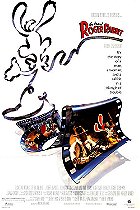 Posted : 15 years, 5 months ago on 6 January 2010 12:10
(A review of Who Framed Roger Rabbit)
Posted : 15 years, 5 months ago on 6 January 2010 12:10
(A review of Who Framed Roger Rabbit)Nowadays everything would be done with just computers, maybe a few sequences here and there would have been done in the hand-drawn mode, and the seams would have been incredibly obvious. Not all modern films suffer from this, but I’ve noticed a lot of them that mistake being able to program it as being able to make it look believable and complete the illusion. The talking dragon at the end of Enchanted screams to mind. Roger Rabbit painstakingly drew in the characters. And they have a real weight, dimension and scope to them. They interact and create action with real world objects. This, I believe, helps prove that while computers can help create great and wondrous things, they can’t replace the magic and realism that comes with the artistry of doing something the hard way. A real set, real animatronics, a real puppet will always be better than the plug-and-chug computer fantasia we’re immersed in right now. There are excepts, but, by and large, doing something the hard way pays off more.
And now for the plot, for the film isn’t simply a gorgeous exercise in visual treats, although it is very much that. Like film noir giant Chinatown, Roger Rabbit uses real Los Angeles history to tell its story. Yes, the red cars really were bought up and closed down, but this had more to do with automobiles being more attractive than public transportation. But there is such a thing as the Great American streetcar scandal, which is more than parallel to the events depicted in the film in numerous ways if not the exact shape and form. And, yes, the California freeway system wasn’t built until the 1950s, but the water and power issues in Chinatown were from different eras than the one presented in the film and no one complains about it harming the overall impact there.
Naturally, the fantasy takes off and creates an alternate world parallel to our own. But what is it really about? Like all great film noir a simple crime that spirals deeper into a city’s under-belly than anyone could imagine. Marvin Acme has been killed, his will is missing, and Roger Rabbit is the only suspect. Our grizzled, frequently drunk and nasty former P.I. must sidestep his ‘toon bigotry and prove that Roger is innocent. Oh, what laughs do we have along the way!
This movie came out when I was a one-year-old, and I feel like I have been watching it all of my life for numerous reasons. As a child I loved the animation. I loved to see the Disney and Warner Brothers characters interacting like some epic crossover that can only happen in the imaginations of young children. The older the got the more I loved it for its adult humor. And now I love it for its dark film noir aspects. Truly, this is great family entertainment. This is from back in the days when family entertainment offered something for everyone and didn’t rely on celebrity voices, ADHD pop culture references, bratty humor and recycled storylines. (I’m looking directly at you Dreamworks!) Who Framed Roger Rabbit is just a great movie.
 0 comments, Reply to this entry
0 comments, Reply to this entry
A Bug’s Life
 Posted : 15 years, 5 months ago on 6 January 2010 12:09
(A review of A Bug's Life)
Posted : 15 years, 5 months ago on 6 January 2010 12:09
(A review of A Bug's Life)The story is a play off of Aesop’s fable about the ant and the grasshopper, expanding times a hundred. Instead of a singular ant and grasshopper, we have an entire colonies of each. All of the ants look like each other, but slightly different enough to tell who is who. The same can be said of the grasshoppers. This is a testament to the love, time and care put into the project by the animators. But as I was originally saying, the story concerns the ants, led by a Queen (Phyllis Diller) and her two princesses (Julia Louis-Dreyfuss, Hayden Panettiere), who must prepare an offering to the grasshoppers, led by Hopper (Kevin Spacey). Of course there must be a hero, and our everyman-cum-hero is Flik (Dave Foley), the smartest ant in the colony. He’s more prone to inventing wildly imaginative gadgets than doing things proper. And in a grand tradition dating back towards Hercules, Flik must go out into the world and prove his worth by completing a task. This task is to find warriors to fight for the ant colony. And the “warriors” that he finds have always been my favorite thing about the film. the rag-tag group of circus performers are charming, hilarious and adorable. I never knew I could want to hug a caterpillar so much.
It ends exactly how you think it would end, but the animation, humor and characters bring more heart and originality to the story than the story beats. Nothing wrong with that. This is an archetypal storyline, and deviation from the formula would put you into a different movie entirely. There’s room for unique characters and humor in these stories though. That’s how you make them special.
And since this is a Pixar film I must talk more about the gloriously rendered images. The tree at the beginning of the film looks like a real tree! The rain drops that fall on the ant hill might as well have been a blitzkrieg. The circus routines are zany and appropriately kid-friendly. The City looks like Manhattan made out of old soup cans, pieces of trash and other odds-and-ends. Beautiful.
But emotionally this is, for me, not as gripping as the toys of Toy Story, the monsters of Monsters, Inc., the nuclear family of The Incredibles, or the Chaplain-esque robot love story of Wall-E. I found them funny and likable, I loved the animation, but I just didn’t connect with this as I did with the others.
 0 comments, Reply to this entry
0 comments, Reply to this entry
The Lion King
 Posted : 15 years, 5 months ago on 6 January 2010 12:07
(A review of The Lion King)
Posted : 15 years, 5 months ago on 6 January 2010 12:07
(A review of The Lion King)The Lion King was once the highest grossing animated film of all-time, and Disney considered it a B-team feature during production. Most of the A-level artists and budget went to Pocahontas, which turned out as one of the worst films the studio produced. Perhaps there’s some justice in The Lion King dominating that film, but I am not entirely sold on it being the greatest film of the Renaissance.
Oh, it is undoubtedly one of the best. Gloriously animated, the film is alive with bright and vivid colors, epic vistas of the African savannahs, a decrepit elephant graveyard, and an overgrown jungle paradise. The Lion King provides a visual feast, a series of locations as mythic and epic as the story it tells.
Essentially Hamlet in Africa, but told with talking animals, The Lion King is perhaps the most mythic and operatic modern Disney film. It borrows liberally from story-telling traditions of the land and monarchy tied together. If the kingdom is prosperous, abundant, and peaceful, then the monarch is beloved and bestowed with the divine. If the kingdom is barren and dying, then a usurper has taken power and corrupted the land with his questionable rule.
A sense of divinity runs throughout. The birth of Simba opens the film, and the entire kingdom comes out to bow before the newborn heir to the throne. A light shines from the heavens to bless the cub, bestowing upon him the right to rule. When he returns to the lands to face his past and claim his birthright, the restoration is immediate. Practically all of Disney’s films operate within fairy tale confines, but The Lion King flirts with the grandeur of Shakespeare and divine myths.
For all of the pathos and dramatics on display, The Lion King is not without its comedic relief. Timon and Pumbaa, a meerkat and warthog, fill in the roles of traditional comedic sidekicks to the hero, playing like Rosencratz and Guildenstern to Simba’s Hamlet. They provide moments of fourth-wall breaking, and lighten the mood when needed. Timon and Pumbaa are part of a larger ensemble of strong, memorable characters.
The best of Disney’s films provide a villain who is pleasing evil and menacing, and Scar, an effete lion with haughty delusions and a jealous streak the size of the Sahara, is all of that. As voiced by Jeremy Irons, Scar is an intellectual who wants the power and the glory of title, but none of the politics and day-to-day tasks. His ego is impressive. But his song has always left me slightly uncomfortable. The vision of hyenas goose-stepping in a children’s film is a bit of cultural iconography appropriation that feels slightly ugly and tone deaf to me.
This points to the major problem with The Lion King – the score is good, but the musical numbers are not. With only two being anything of worth, the rest are just kinda there taking up real estate. “Can You Feel the Love Tonight” is gooey and sappy, “The Circle of Life” is pretty visuals and a plain melody, and “Be Prepared” has another example of a Disney villain caked in green lights and puffs of smoke. Someone should write an essay about this reoccurring visual motif. The only musical numbers that linger in my mind are “Hakuna Matata” and “I Just Can’t Wait to Be King.” “Hakuna Matata” is pure joy, and economically gets us from Simba’s childhood to adulthood through montage. “I Just Can’t Wait to Be King” looks like nothing else in the movie, and it’s all the better for it. The backgrounds turn into Mary Blair looking geometric patterns, and Disney once more borrows from the Busby Berkeley playbook to create large patterns moving in unison. (Most versions of the film now contain a segment called “The Morning Report.” Not a lot can be said about it, as I think it was rightly dropped the first time around and its inclusion is unnecessary.)
However, this never takes away heavily from the film. I find the maturity and mythic scope of the film more engrossing and enjoyable than anything else. It’s fun to spend time with these characters, equally moving and frightening, heartbreaking and uplifting. There’s a reason The Lion King is the highest grossing hand-drawn animated film. It’s a story well told, with a game voice cast, and great animation. Yeah, it’s a classic.
 0 comments, Reply to this entry
0 comments, Reply to this entry
Is This It
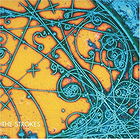 Posted : 15 years, 6 months ago on 17 December 2009 01:24
(A review of Is This It)
Posted : 15 years, 6 months ago on 17 December 2009 01:24
(A review of Is This It) 0 comments, Reply to this entry
0 comments, Reply to this entry
Heathen
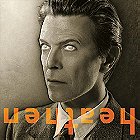 Posted : 15 years, 6 months ago on 17 December 2009 01:23
(A review of Heathen)
Posted : 15 years, 6 months ago on 17 December 2009 01:23
(A review of Heathen) 0 comments, Reply to this entry
0 comments, Reply to this entry
Freedom of Choice
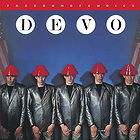 Posted : 15 years, 6 months ago on 17 December 2009 01:23
(A review of Freedom of Choice)
Posted : 15 years, 6 months ago on 17 December 2009 01:23
(A review of Freedom of Choice)Everyone knows the big singles: “Whip It,” “Gates of Steel,” “Girl U Want,” and the title song, but every cut on this record is aces. I love the keyboard-and-synthesizer stomp intro on “It’s Not Right” as much as the video game noises of “Snowball” and the riotous punk drum-and-keyboard loop of “Ton O’ Luv.” If the first album was all about devolutionary theories and yellow jumpsuits then this album is all about red flowerpot hats and disconnected sexual relationships and Cold War paranoia. “Cold War” summarizes the entire theory behind the album in a robotic dance party. But let’s talk about the singles for a minute. “Freedom of Choice” is steeped in irony and social angst. “Whip It” can be read in a few different lights, but I’ll always think of it as an android’s S&M tryst (much of that has to do with the video). And, of course, my favorite Devo song: “Girl U Want.” A giddy account of teenage love which sounds like it has been processed by a Mac. Next to their cover of “Satisfaction,” I can think of no more perfect a synthesis of their human desires/robotic delivery dynamic.
I thought that they sounded like robots who just wanted to dance and sneer like punks on their debut, but this takes into an entirely new level of computer programmed, machine made futurism that makes the debut seem like singer-songwriter confessionalism. That’s not a swipe at the band, it’s why I adore their music and nerdy glory.
I firmly believe that Devo is an underrated and underappreciated band. Their ironic detachment and angular approach to music has always interested and inspired me. This is probably the album that formed the casual listener’s ideas about the band, their music and ideology. And that is not a bad thing. This is a great album. DOWNLOAD: “Girl U Want”
 0 comments, Reply to this entry
0 comments, Reply to this entry
Blank Generation: The Birth of Punk
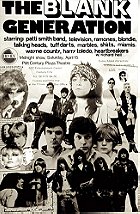 Posted : 15 years, 6 months ago on 17 December 2009 01:21
(A review of The Blank Generation)
Posted : 15 years, 6 months ago on 17 December 2009 01:21
(A review of The Blank Generation)I love that a film about a music genre so fully birthed by the underground art community refuses to play it safe. Anyone expecting a normal concert documentary, like, oh I don’t know, Woodstock need look elsewhere. The film infamously uses grainy black and white 8mm footage and overlays it with live recordings or demo tapes. The sound and vision often have nothing to do with one another. That is highly punk rock. In fact, it’s best to not think of this as a documentary. An art instillation could work, or perhaps a video scrapbook? Whichever you prefer.
I just wish that Suicide got some love as well, but it’s fantastic to see the New York Dolls, the first of the group to have any kind of ‘success,’ included in the proceedings. It’s also great to see that the ‘punk rock’ movement included wildly different sounds. You can’t tell me that the Ramones, Blondie, Patti Smith, Television, Talking Heads and Wayne County have anything sonically similar with each other besides being rough around the edges and different from what was popular at the time. And God bless them for it.
Seeing Patti Smith just starting isn’t very jarring, just update the wardrobe and she’s still the same. But seeing a trio version of the Talking Heads is. Same goes for seeing the original four Ramones, which has more to do with the fact that three of them have now passed on then how much their look updated over the years. Naturally since Debbie Harry is involved, she remains the most beautiful image in the entire film with her Cleopatra makeup, purposefully bad dye job and bored Nico-like stare. But Jimmy Destri pops up shirtless and Richard Hell appears at the very end – they were the closest things that punk rock ever had to pin-up boys. At least, I think so. I also love the ending roll call where every band’s name is spelled out on a leather jacket. How fitting.
I realize that much of this review has been from the point-of-view of someone who idolizes this specific movement, these specific performers and this specific sound/look/ideology. But I am probably the target audience for this. I get it, I understand it so instinctively that I can’t help but love it. I am such a pretender to their effortless cool that this allows me to have a brief glimpse into mid-70s underground avant-garde rock scene.
 0 comments, Reply to this entry
0 comments, Reply to this entry
The Men Who Stare at Goats
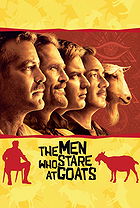 Posted : 15 years, 6 months ago on 17 December 2009 01:19
(A review of The Men Who Stare at Goats)
Posted : 15 years, 6 months ago on 17 December 2009 01:19
(A review of The Men Who Stare at Goats) 0 comments, Reply to this entry
0 comments, Reply to this entry
Land (1975 – 2002)
 Posted : 15 years, 6 months ago on 6 December 2009 07:31
(A review of Land (1975-2002))
Posted : 15 years, 6 months ago on 6 December 2009 07:31
(A review of Land (1975-2002))The first disc, a non-chronological run through her studio albums for Arista, never lets up with all of Smith’s inventiveness, poetic genius and sheer force of personality, will, artistry. The only new song, a cover of then album-mate Prince’s 1984 hit “When Doves Cry,” is another great cover from Smith. Naturally, it barely resembles its original presentation, but it moves along with Smith’s alternative folk arrangement nicely. Since Smith has never really charted, “Because the Night” being her only hit, she wasn’t bound to include the obvious. She has opted instead to offer up fan favorites, personal favorites and the few songs she is well-known for. Personally, I would have traded out “Ain’t It Strange” for “Ask the Angels” or “Pumping (My Heart),” but that’s just my opinion and personal preference.
The second disc is where she gives her fans the real treats. “Piss Factory,” her first single ever recorded (although “Hey Joe,” that single’s b-side is nowhere to be found), makes its debut on an official Smith release. The rest is an assortment of studio outtakes, demos, live cuts and previously unreleased material. While the first disc leans heavily towards material from her 70s output, the second disc leans towards her 90s and early 00s material. Not a bad thing since these songs sounds fuller, richer and more punk than their studio versions. I don’t mean that as an insult to the studio versions, which rank amongst my favorites but the polish has been removed and the songs can breath deeply now.
This is not the only Smith release you will ever need, far from it. Land is not a summary, it is a great introduction. If you’re a fan and already own most of the albums that these songs are culled from, get this anyway for that second disc of rare material. It’s well worth it. DOWNLOAD: “Piss Factory,” “When Doves Cry,” “Higher Learning/Contemplation,” “Come Back Little Sheba”
 0 comments, Reply to this entry
0 comments, Reply to this entry
New York, I Love You
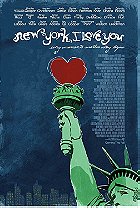 Posted : 15 years, 6 months ago on 6 December 2009 07:27
(A review of New York, I Love You)
Posted : 15 years, 6 months ago on 6 December 2009 07:27
(A review of New York, I Love You) 0 comments, Reply to this entry
0 comments, Reply to this entry
 Login
Login
 Home
Home 95 Lists
95 Lists 1531 Reviews
1531 Reviews Collections
Collections